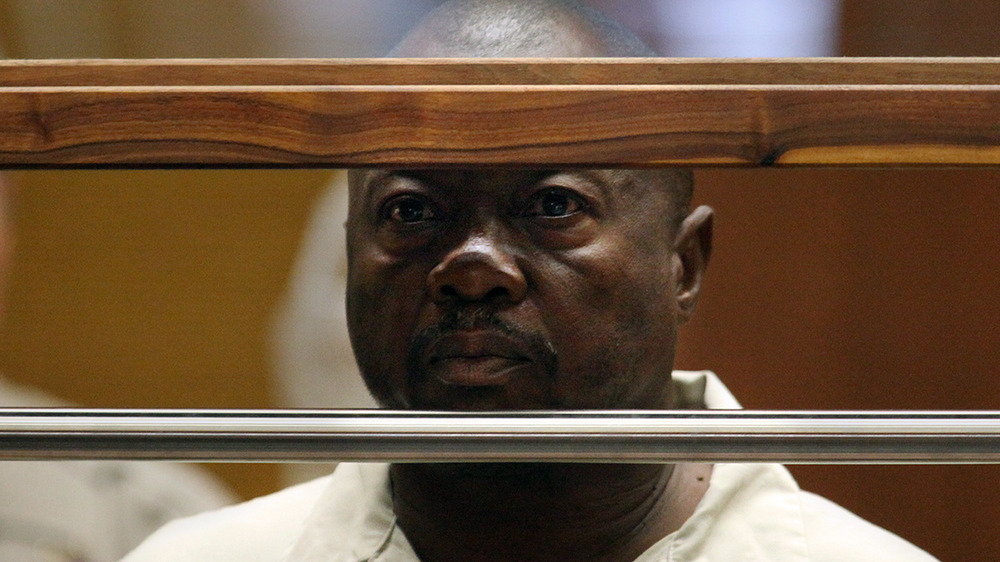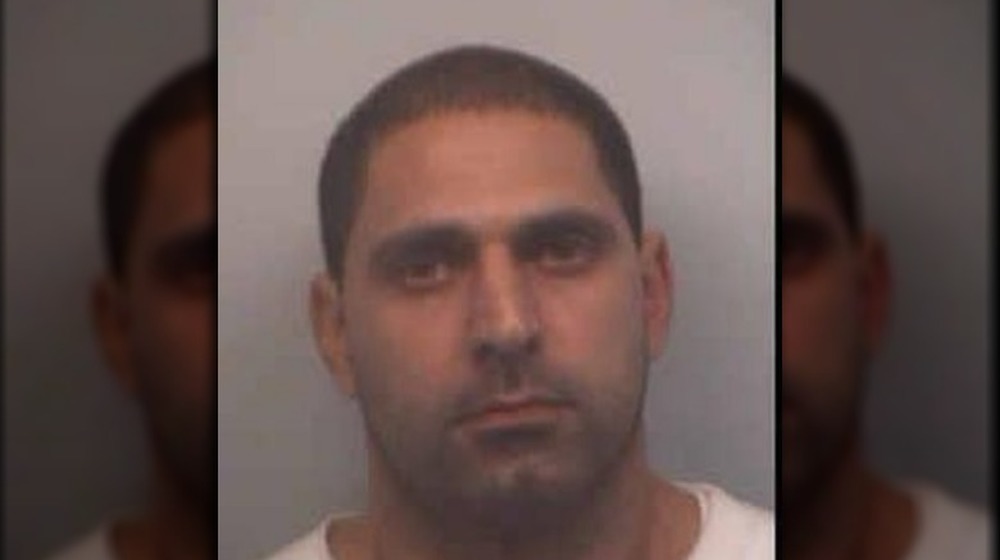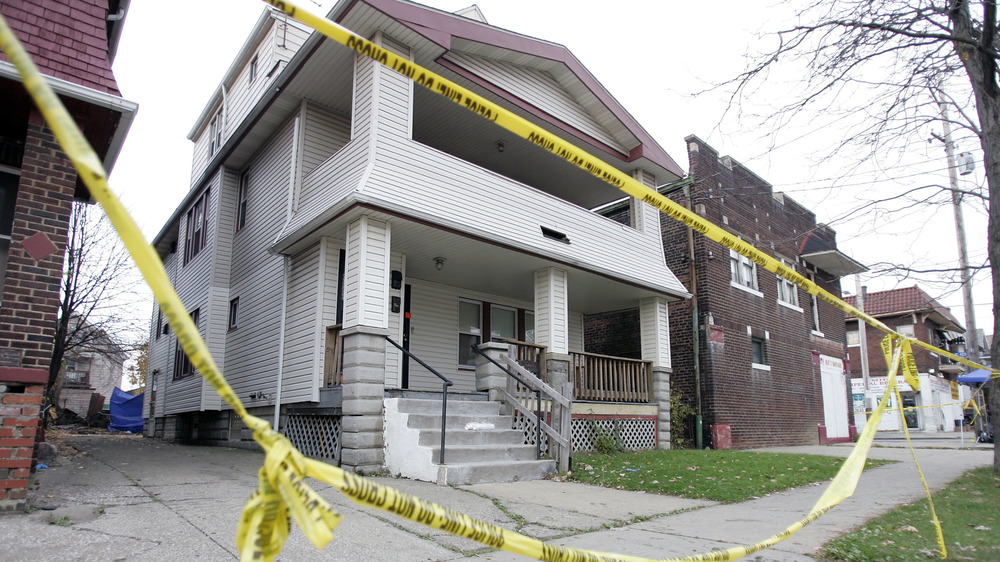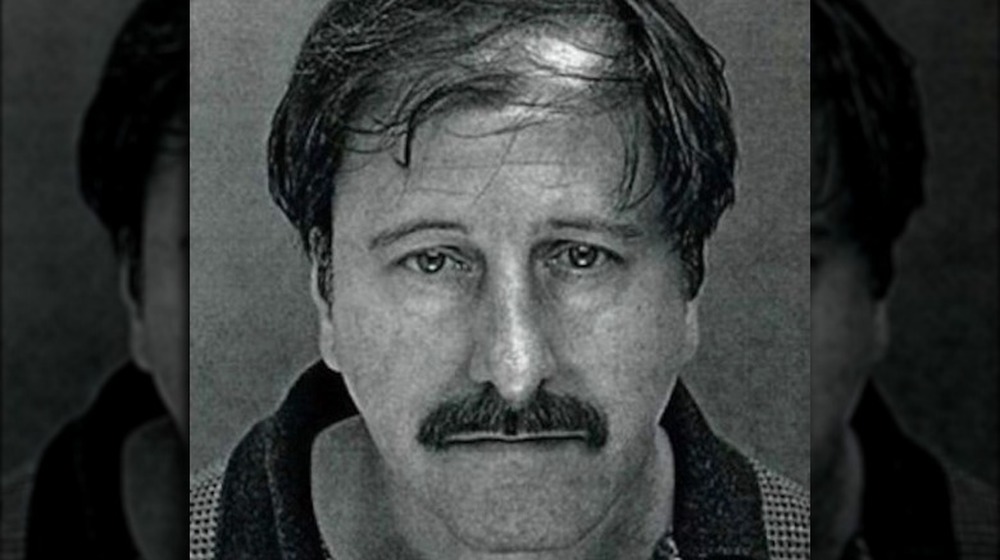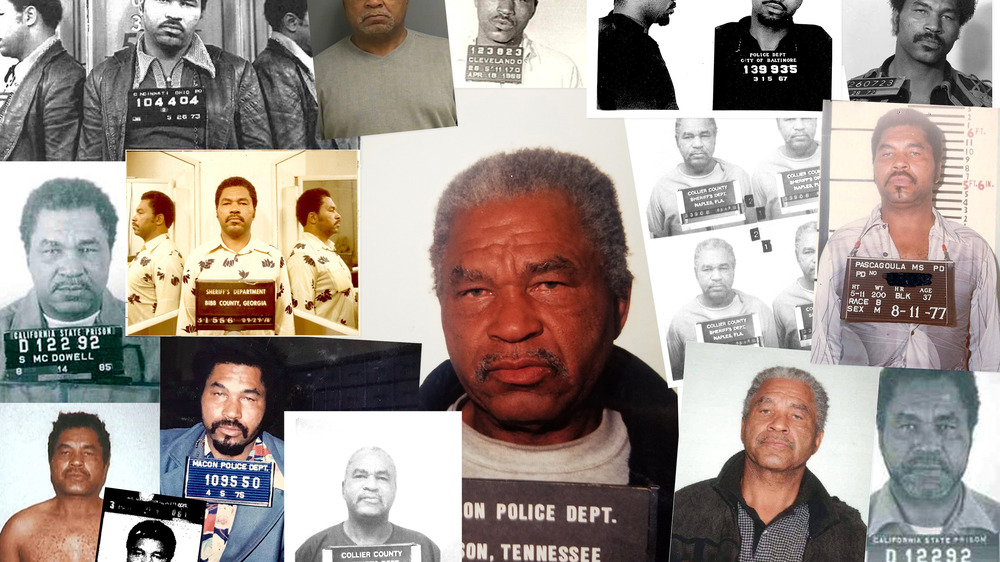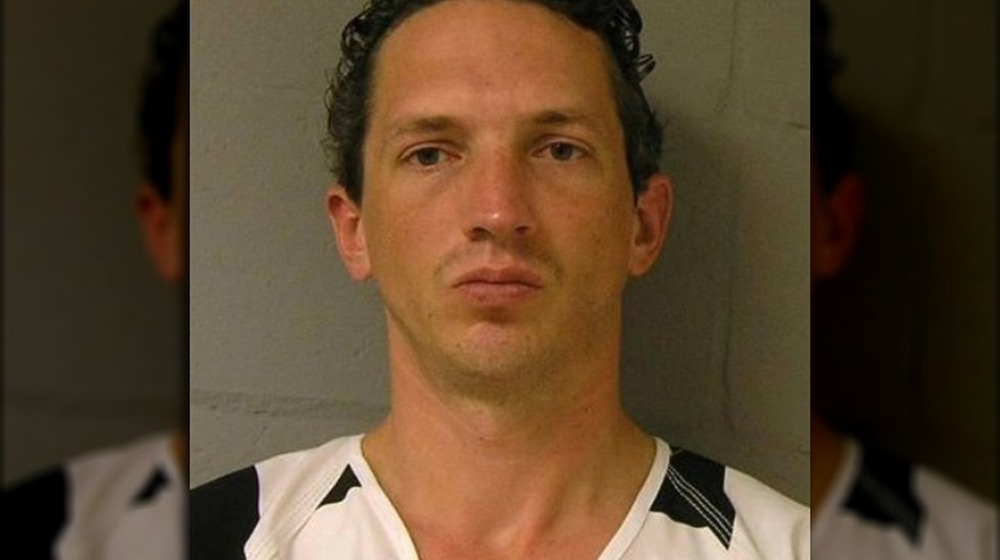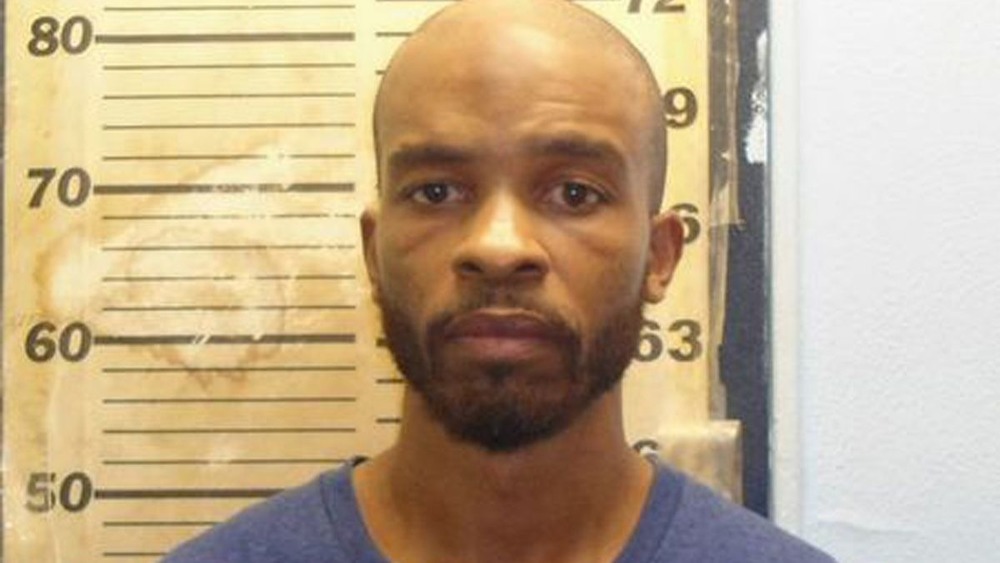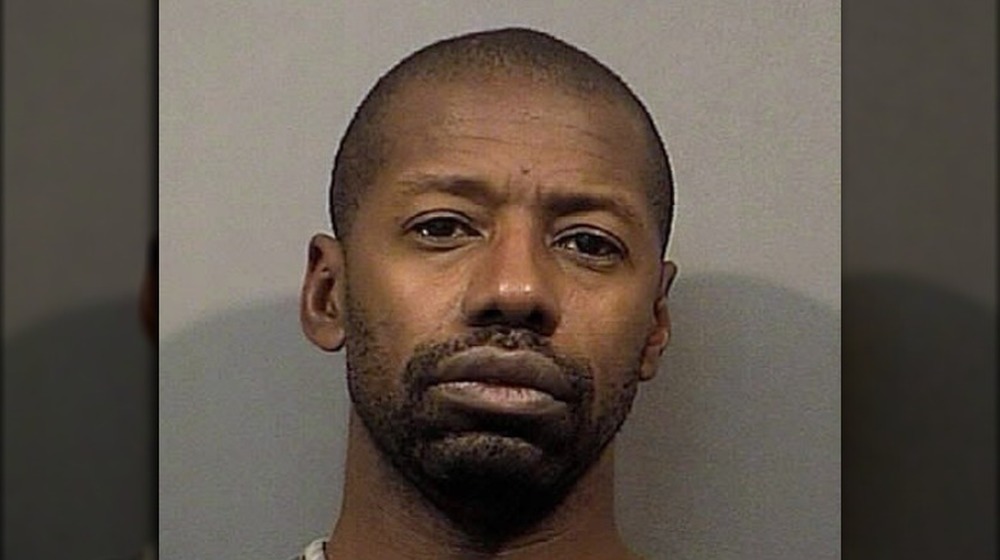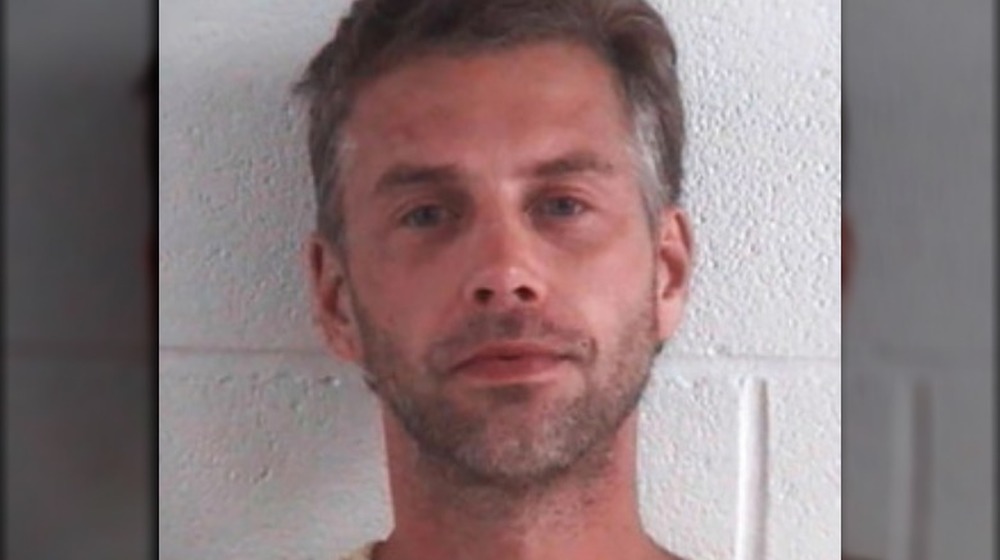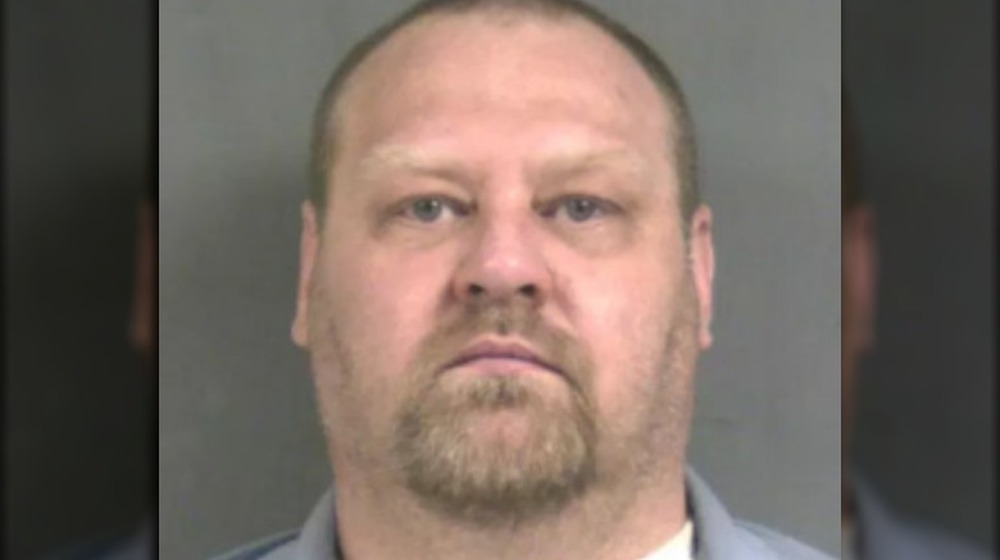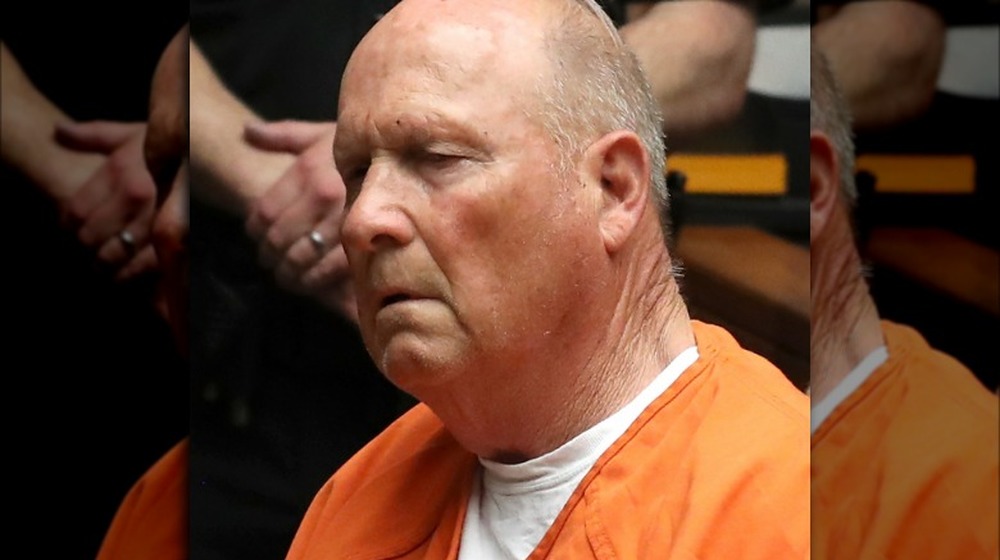Every Serial Killer Caught In The Past 10 Years
Though it's not precisely clear what goes into making a serial killer, it's more than apparent that the United States has had an abundance of them. You might by saying, "Isn't anything more than zero an abundance when it comes to people who single out and murder multiple victims over a large enough span of time?" To which, the answer is "yes," but one doesn't even start to make a dent in the country's overall list. Sure, serial killings make up a minute percentage of the murders that happen every day in the U.S., but it hasn't stopped our modern culture from turning these criminals into an obsession.
There are movies and television shows about serial killers that tend to do one of three things — inform us of their horrible deeds, terrify us out of our skins, or, disturbingly, glorify and humanize killers, turning them into fictional idols (looking at you, Dexter). There's something about these twisted individuals that titillates us, grabbing our interests and the twisted parts of our dark psyches. Even so, none of us are happy with serial killers loose and running amok. Killers are best kept housed in the safety of books, on television, or behind bars, and in the past ten years, quite a few of them have been put away for good. Here's a look at every serial killer that's been caught in the past decade.
The Grim Sleeper Lonnie Franklin
Lonnie Franklin earned his moniker, "The Grim Sleeper," because authorities believed this serial killer was taking a long lull after a string of murders in the 80s until he began to stalk the Los Angeles streets again in the 2000s. To their knowledge, "The Grim Sleeper" had few victims that were spaced years apart. But, by the time Franklin was finally caught in 2010, according to the Los Angeles Times, the numbers were higher than previously imagined. In all, "The Grim Sleeper" was charged with the murders of ten women, and the numbers may even be higher than that.
With the more than 180 photos found in the killer's possession when he was brought in, it's possible, as Rolling Stone notes, that Franklin had killed more than 25 women, potentially leaving 15 unaccounted for in southern California. The authorities in these cases tend to continue trying to identify victims long after the killer has been convicted so the families can have some closure, and the 180 photos will surely help with that, but with Franklin already sentenced to the death penalty in 2016, there really wasn't much more they could legally do to the guy. Even if they do find more charges to bring against "The Grim Sleeper," they wouldn't have much luck in making them stick since Franklin died in his cell in March of 2020, according to NBC. That being said, it would certainly deepen the tragedy if any of Franklin's victims were left unidentified.
The serial stabber, Elias Abuelazam
Talk about a guy who loves stabbin'. Elias Abuelazam, "The Serial Stabber," did enough stabbing during his serial killer run that it became nearly unbelievably excessive. Abuelazam's crimes span from Michigan through Ohio and all the way to Virginia, with the majority having been committed in Flint, Mich. According to ABC, it's thought that Abuelazam may have stabbed up to 20 victims, with at least five having died. Most of the killer's victims were Black men, either by design or coincidence, suggesting much of his murderous impulse could have been racially geared. One of the few ways to make serial killing worse, as if it wasn't bad enough on its own, is to commit racist serial killings.
The killer's run covered the very end of the 2000s before he was arrested and convicted, which was kind of a wild ride of its own. The police finally caught up to Abuelazam at an airport in Atlanta where he was attempting to flee the country in 2010, but in the weeks before his final arrest, the police had already taken him into custody in both Michigan and Virginia before letting him back out almost immediately after. M Live reports that it took two years to convict Abuelazam of the murders, but he was ultimately given life in prison. Though, many of the murder and assault charges brought about by his stabbing rampage were dropped along the way.
The Cleveland Strangler Anthony Sowell
Anthony Sowell, "The Cleveland Strangler," has a pretty straightforward MO, as you may have guessed. This killer strangled his victims in Cleveland, Ohio, but it wasn't the killings that initially peaked investigator's suspicions of this murderer. It all started in 1989, as outlined in Cleveland.com's timeline of events, when Sowell assaulted a woman and was sentenced a year later to serve 15 years. He was paroled early and came under suspicion of sexual assault several times after. Being a sex-offender meant the authorities could pay Sowell a surprise visit anytime they pleased to check and make sure everything in his life was going as it legally should, and that's what happened in 2009.
For years, there had been complaints about foul odors emanating from somewhere near Sowell's home, but the dots hadn't been connected until that day of the surprise visit. Girls had also been found strangled in the area, ones Sowell is suspected of killing, as far back as 1988. But, on that fateful day, Sowell assaulted another woman and earned himself another arrest. When the police searched his home, they found the decomposing bodies of several victims on his property. According to CBS, "The Cleveland Strangler" killed at least 11 women during his run, and though he wasn't arrested in the past ten years, he was convicted for those killings in 2011 and sentenced to death. The penalty couldn't be upheld though, since Sowell died in prison in February 2021.
The Son of Sal Salvatore Perrone
Salvatore Perrone, "The Son of Sal" as he's been ironically named, picked a different kind of victim than most serial killers. Perrone targeted not women, or sex workers, or the faithless, but people that every corner of the Earth needs to function. He had his targets set on shopkeepers. According to HuffPost, Perrone gunned down three shopkeepers in the Brooklyn, N.Y. area in 2012.
The New York Times reports that Perrone worked his days as a traveling salesman, and it's possible that there's some unknown contention between his trade and that of those who ran their sales from a solid post, but if that's the case, few have ever heard of it. Regardless, Perrone's killings were cold-blooded. He walked into each of the shops and opened fire with a sawed-off .22 caliber rifle. The first victim, as Oxygen notes, was taken with a single shot to the neck. The next was killed by a mix of bullet and stab wounds. And, the final was gunned down with an exceptional barrage of bullets that penetrated his head, neck, and torso.
Perrone was arrested the same year as the killings after the authorities found a duffle bag containing his rifle and three knives, covered with traces of what looked like blood, at his girlfriend's apartment. The killer was sentenced to life in prison, though it's more than likely that this killer would've received the death penalty had he committed his crimes in any other state.
The most prolific serial killer in United States history: Samuel Little
There haven't many (or any really) known serial killers to wrack up a body count in the United States as high as that of Samuel Little. That's not just speculation either. The Federal Bureau of Investigation has confirmed that Little is the most prolific serial killer in U.S. history. Little gained his title by murdering those he thought would never be accounted for, according to Crime Analyst Christie Palazzolo (found via the FBI website), and he nearly got away with it too.
This killer's murder spree began in 1970 and ended in 2005, though, as NPR notes, Little wasn't convicted of his crimes until 2014, and it took another four years for him to willingly confess. A mind-blowing confession it was too. Little has stated that he strangled 93 victims during his serial killing career, and so far, at least 50 of his confessed crimes have been confirmed. As The New York Times points out, those 50-plus victims make Ted Bundy's 33 and John Wayne Gacy's 36 look measly in comparison. Along with Little's confession, he was kind enough to provide investigators with detailed sketches of his victims, to which the authorities are still trying to match identities.
Little lived an entire life of crime, surviving on what he could steal and drifting the country until he was put behind bars. He died in prison in December 2020.
A serial killer who broke his own rule, Israel Keyes
The first rule in the metaphorical serial killer's handbook is to not get caught, and a big part of that is thorough foresight and preparation, of which Israel Keyes had plenty. According to ThoughtCo, Keyes was one of the most methodical killers in history, reminiscent of the iconic Hannibal Lecter. He operated within a minutely defined process that allowed him to take the lives of what ABC says were between eight and 12 victims before he broke his own rules and brought his murder spree to an end in 2012.
Keyes' method went as follows. He refused to kill in his backyard and would instead fly around the country to hunt his victims. He'd then rent a car and drive up to hundreds of miles to find them. Keyes had the forethought to hide murder kits wherever he planned on killing, usually consisting of items like shovels, plastic bags, weapons, and chemicals to help decompose the bodies. His kills would then happen in remote areas or houses with attached garages so there'd be no witness to catch him in the act. Because of his methods, his victims have been identified all around the continental United States and as far as Alaska.
Keyes was only caught, as ABC reports, because he killed a victim close to home and used her debit card to make a purchase. To this day, the FBI is still trying to track down all of his potential kills.
A convicted sex offender turned serial killer, Michael Madison
Before Cleveland's Michael Madison turned to serial killing, his violent sexual impulses had already landed him a four-year prison sentence in 2002 for attempted sexual assault, according to Syracuse.com. The publication also says the mayor, at the time of Madison's murder-related arrest in 2013, believed Madison might have been influenced in some way by Anthony Sowell. If so, it's a good thing Madison didn't have quite as long or as prolific of a run as "The Cleveland Strangler."
Madison's murders started and ended shortly before his arrest over a period that lasted less than a year. Cleveland.com details how at separate times the killer met all three of his victims and lured each back to his place where he'd then strangled them to death. Madison would go on to wrap the bodies of his kills in garbage bags and store them in specific areas where they'd serve as sentimental plaques of a sort. See, Madison was a trophy collector. He stashed one victim in his garage, another in a bush, and the final victim in the basement of an empty house close by. In these locations, Madison could view all of the bodies from the second-story balcony of his home anytime he wished.
Naturally, a jury found Madison guilty of his crimes in 2019, and he was given the death penalty. Though, with the appeals process, it's not likely he'll be gone anytime soon.
The Gary Strangler Darren Deon Vann
The 2010s was a decade filled with "stranglers." From "The Cleveland Strangler" to his copycat, Michael Madison, and then on to Darren Deon Vann, "The Gary Strangler." At least the moniker paints a clear and decisive picture of these killers' MOs. Vann operated in Gary, Ind., as his nickname suggests, and The Chicago Tribune says he killed at least seven people over roughly a one-year period. According to CNN, he was too preoccupied to pull of the killings any other time since he'd been in prison on assault charges until July 2013 and was arrested for his killings in October 2014.
It would seem that Vann killed for a number of reasons, but when you put them all together, you see that the man probably just enjoyed killing for what it was. When Vann was questioned after being taken into custody, he admitted that he killed one woman for a few hundred bucks and a bounty of cocaine, according to NWI.com. Another he killed simply because he was angry. So on and so forth. From there, Vann took the police on a scavenger hunt where he revealed the bodies of victims he'd hidden within abandoned houses throughout the city.
In 2018, Vann's case would finally come to end due to a plea deal he struck with prosecutors for life in prison in order to avoid the death penalty. In exchange, the killer wouldn't be able to appeal the verdict or sentencing.
The reason the death penalty exists: Shawn Grate
A revealing phone call rang in to 911 dispatch in the middle of the night when one of Shawn Grate's victims took advantage of her capturer's unconscious state, tipping off the authorities to what they would soon discover was a serial killer. But, when Grate was arrested in 2016 for the murder of two women, nobody could've guessed that it would be the starting point from which the case began to get interesting. According to Heavy, it didn't take long for the killer's two murder charges to turn into five. Grate had been murdering for a lot longer than anyone originally suspected.
His first kill, as the publication points out, took place in 2006, and even his girlfriend at the time didn't decrypt his serial killing tendencies. She was so unaware he managed to trick her into unwittingly cleaning up the woman's blood before he proposed to her with a ring off the victim's finger. His reasoning for his acts, detailed in the letters he sent to News 5 Cleveland, was because "they were already dead, just their bodies were flopping wherever it can flop but their minds were already dead!"
Grate would receive the death penalty for his crimes, upheld in a 2020 appeal, which the county prosecutor of the case thought was fitting. "He is the reason the death penalty exists in the state of Ohio," County Prosecutor Christopher Tunnell told the judge from the case (found via the Times-Gazette).
A serial killer with a garden, William Devin Howell
William Devin Howell was already serving a 15-year term for manslaughter when he was charged with the murders of six other people, whom he killed in 2003, according to ctpost. In 2017, as the Connecticut State Division of Criminal Justice points out, Howell pleaded guilty to the charges and received six consecutive life sentences on top of the time he was already serving.
The killer spoke with author Anne Howard (found via A&E) and spilled all of his dark, disturbing secrets before his conviction. According to Howell, he didn't murder for the sake of murder. To him, it was all about the assault, which he claims to have committed with each of his victims save one. Killing was just a way to get rid of the evidence. It's the same reason he dismembered one of his victims. If they had no fingers, they couldn't be finger-printed. No jaw, no dental records. The one victim Howell didn't assault was a trans woman, who he admits to killing outright, with no assault.
After each killing, Howell would dump the bodies in a swamp behind the local strip mall, which, as the Hartford Courant points out, was his "garden." The term is one Howell has used and has even become the title of Anne Howard's book, His Garden: Conversations With a Serial Killer.
The Golden State Killer Joseph James DeAngelo
A former police officer by the name of Joseph James DeAngelo was arrested in 2018 for being the infamous "Golden State Killer," proving that serial killers can truly be hiding behind any corner or within any face. DeAngelo's arrest, however, took one of the most infamous serial killers of the past century off the streets and put to bed a case that had gone unsolved for 40 years.
As noted by ATI, DeAngelo committed a string of at least 12 murders and more than 50 assaults in a period that spanned through the 70s and 80s. The spree poisoned the hearts of California residents with heavy feelings of paranoid fear for years, first as the "East Area Rapist," then as "The Original Night Stalker," before settling into his final title as "The Golden State Killer." Whatever name DeAngelo's serial killer persona went by didn't matter. He was sentenced to more than 20 life sentences for his terrible deeds regardless, and it only took a covert investigation, DNA evidence, and the better part of half a century to do it.
The Los Angeles Times details the investigation that led to DeAngelo's arrest, noting that the investigators used two for-profit genetic genealogy companies to match bodily fluid from a rape kit in the case to some of DeAngelo's family members. Once identified, the killer confessed to 26 total kidnappings and murders, as well as more than 60 other violent crimes, closing a case that seemed virtually unsolvable.

